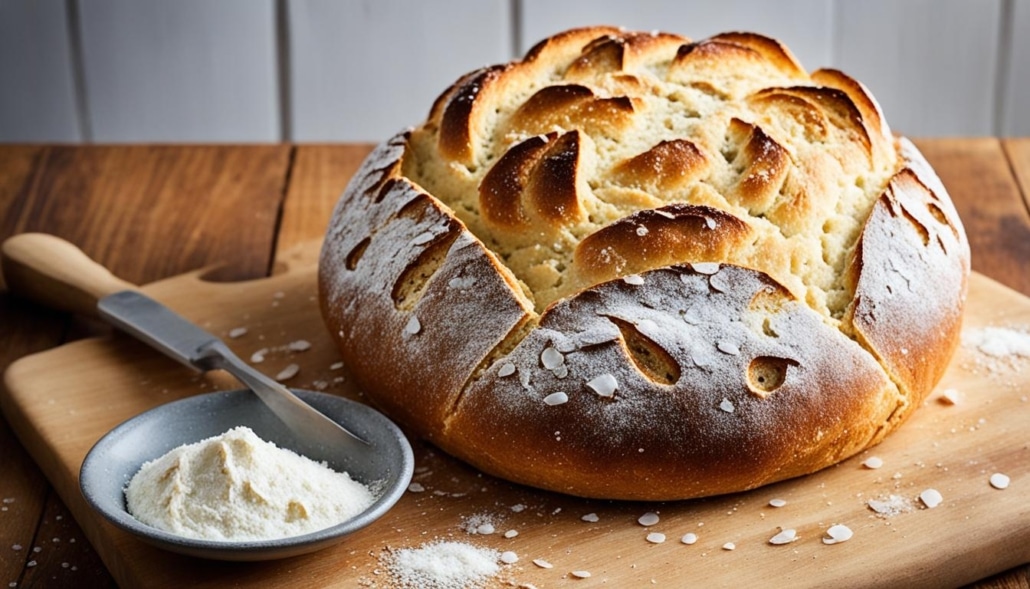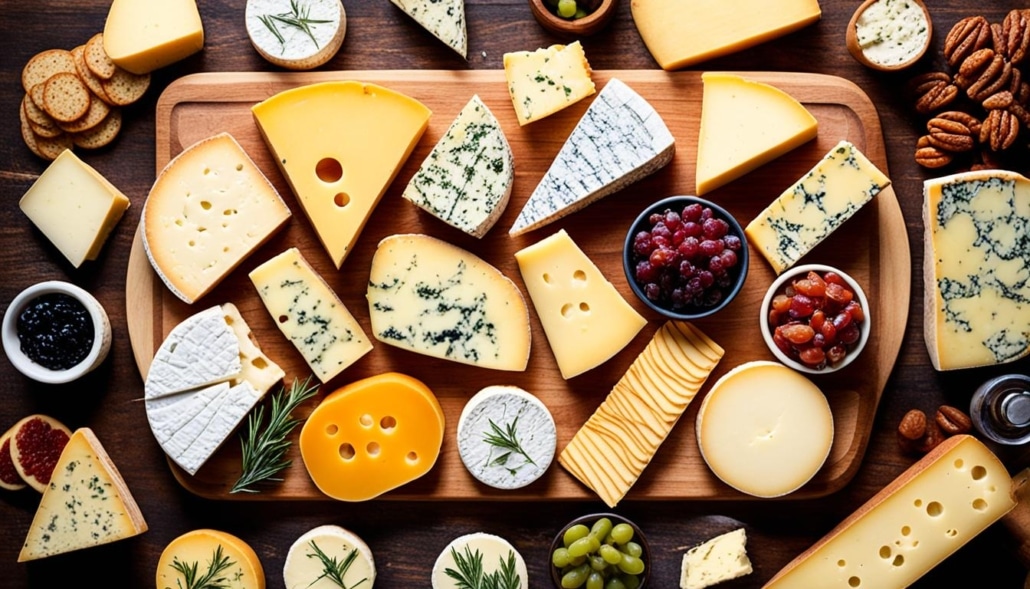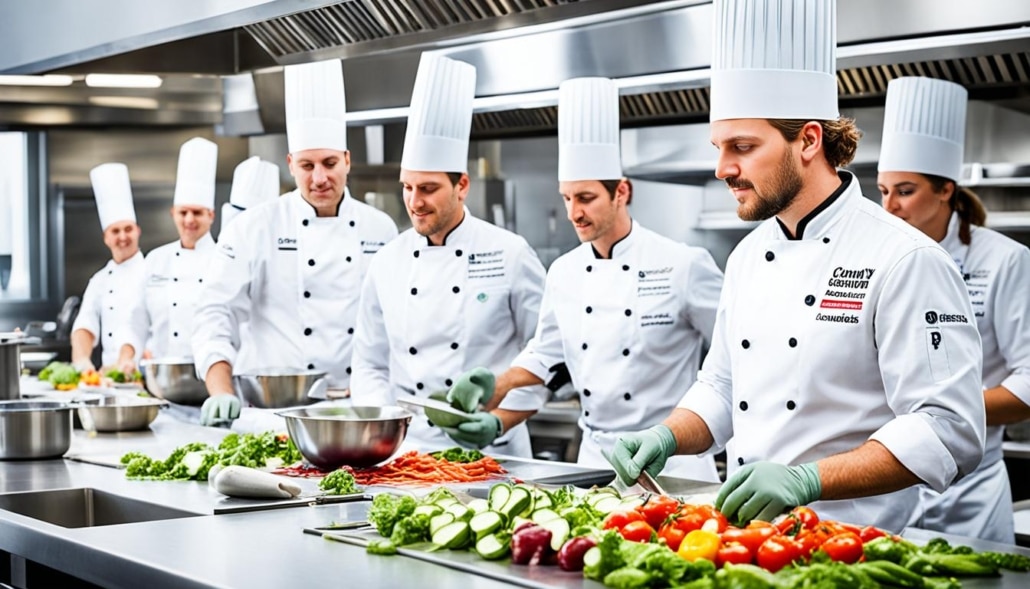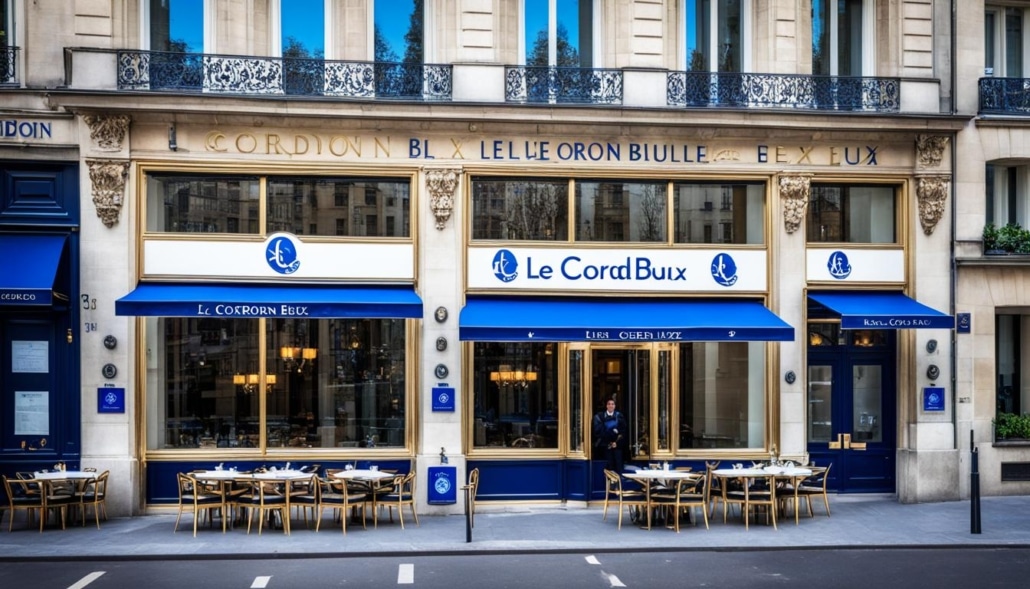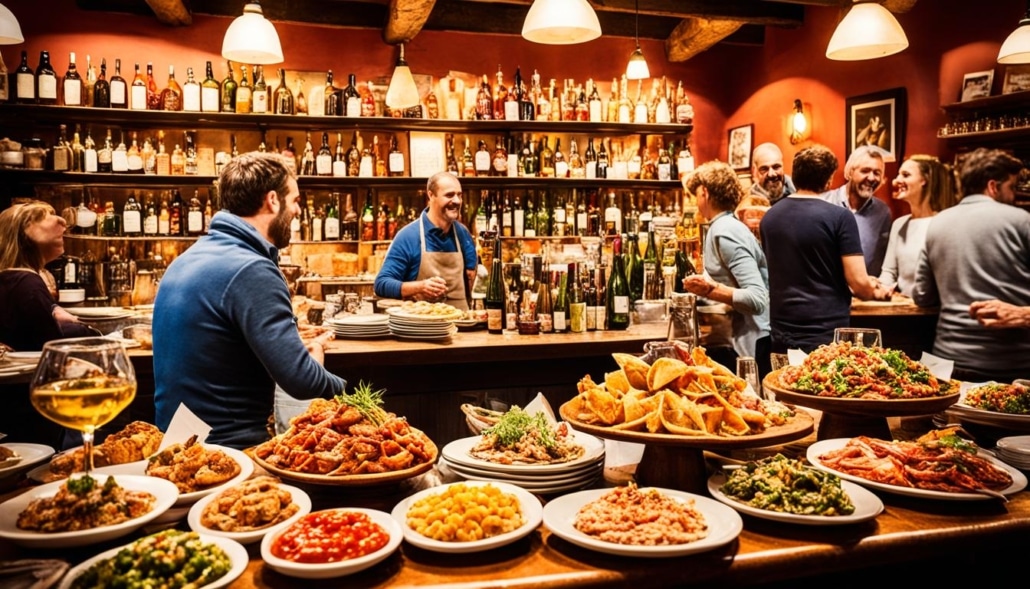Picture this: it’s a lazy Sunday morning, and the aroma of freshly baked bread fills the air. The golden crust crackles as you break off a warm slice, and the soft, pillowy interior melts in your mouth. It’s a moment of pure bliss, a taste of tradition crafted by your own hands.
Artisan bread making has become a cherished culinary tradition, one that brings families together and evokes a sense of nostalgia. It’s about more than just the end result – it’s about the process, the love and care that goes into each loaf.
That’s why we’re so excited to share the art of artisan bread making with you. From the basics to the advanced techniques, we’ll guide you through the journey of creating your own masterpieces. And what better way to learn than through baking classes led by seasoned bakers who have honed their craft?
These classes are designed for bread enthusiasts of all skill levels. Whether you’re a beginner looking to learn the basics or a seasoned home baker looking to expand your repertoire, there’s something for everyone. You’ll get hands-on experience, expert tips, and the opportunity to connect with a community of fellow bread lovers.
So, come join us as we dive into the world of artisan bread making. Get ready to unleash your inner baker, embrace the scent of tradition, and savor the incomparable taste of homemade bread.
The Bread Alone Legacy: Daniel Leader’s Influence on Artisan Bread Making
Daniel Leader has had a profound impact on the artisan bread movement in the United States. As the founder of Bread Alone bakery, he has been at the forefront of promoting and popularizing the art of artisanal bread making in the country. With his deep-rooted passion for baking and a rich background in European bread making methods, Leader brings a unique perspective to the world of artisan bread.
Before founding Bread Alone bakery, Daniel Leader honed his culinary skills as a chef in prestigious New York City restaurants. This experience allowed him to gain insights into the highest standards of culinary craftsmanship and the importance of using quality ingredients.
With a commitment to traditional European bread making techniques, Leader’s expertise is unparalleled. His dedication to the craft is evident in the exceptional bread produced at Bread Alone bakery, which has become synonymous with artisan bread of the highest quality.
Leader’s influence extends beyond the walls of his bakery. His books, including the acclaimed “Bread Alone” and “Local Breads,” have become essential references for home bakers and professionals alike. These books provide valuable insights, recipes, and guidance on various bread making techniques, allowing readers to delve into the world of artisan bread making with confidence and creativity.
The Bread Alone Legacy: Quality and Tradition
Bread Alone bakery has gained a well-deserved reputation for its commitment to using traditional European methods in bread production. From sourdough classics to specialty loaves, each bread is meticulously crafted with the utmost attention to detail and quality. The bakery sources the finest ingredients, ensuring that every bite of their bread is a true delight.
The dedication to tradition and the relentless pursuit of perfection is what sets Bread Alone apart. Every loaf reflects Leader’s passion for bread making and his commitment to preserving the timeless heritage of artisan bread. The Bread Alone legacy continues to inspire not only aspiring bakers but also connoisseurs of fine bread.
The Art of No-Knead Bread: Simple and Delicious
One of the key techniques in artisan bread making is the no-knead method, which has gained popularity for its simplicity and delicious results. With just a few pantry ingredients like flour, salt, yeast, and water, anyone can make a homemade loaf of artisan bread. The slow-rise method allows the dough to develop flavor and texture, making it a favorite among both novice and experienced bakers.
Angela from Frugal Living NW has shared her no-knead artisan bread recipe, which has become a crowd-pleaser. This recipe requires minimal hands-on effort and a longer rise time, allowing the dough to develop great flavor. The bread can be baked in a cast-iron Dutch oven to achieve a crusty exterior and soft, chewy interior.
Angela’s No-Knead Artisan Bread Recipe
| Ingredients | Instructions |
|---|---|
|
|
Conclusion
Artisan bread making is a timeless tradition that brings joy and satisfaction to those who indulge in the process. The revival of homemade bread baking has sparked a renewed interest in the art of creating delicious, homemade loaves of artisanal bread. People all over the world are rediscovering the pleasure of kneading dough, watching it rise, and savoring the aroma of freshly baked bread filling their homes.
Bakers like Daniel Leader have played a significant role in the bread-baking revival, inspiring others to embrace the craft and explore the world of artisan bread making. Through his expertise, books, and renowned Bread Alone bakery, Leader has brought traditional European bread making methods to the forefront, allowing enthusiasts to learn from the best and create their own masterpieces.
Whether it’s attending baking classes or simply experimenting with different recipes at home, engaging in artisan bread making allows individuals to connect with culinary traditions and experience the sensory delight of homemade bread. The satisfaction of biting into a crusty loaf with a soft, chewy interior, knowing that it was lovingly crafted with one’s own hands, is unparalleled. So, why not join the bread-baking revival and embark on your own aromatic journey of artisan bread making? With a little practice and a lot of passion, you can create bread that not only nourishes the body but also warms the soul.
FAQ
What is artisan bread making?
Artisan bread making is a culinary tradition that focuses on creating bread using traditional techniques, high-quality ingredients, and a slow fermentation process to develop flavor and texture.
Who is Daniel Leader?
Daniel Leader is the founder of Bread Alone bakery and a prominent figure in the artisan bread movement. He has authored acclaimed books on bread making and is known for his expertise in European bread making methods.
What are some of Daniel Leader’s notable books?
Some of Daniel Leader’s notable books include “Living Bread” and “Local Breads,” which have received awards and praise for their unique recipes and expert guidance.
What is the no-knead method in bread making?
The no-knead method is a technique in bread making that eliminates the need for extensive kneading. It involves a longer rise time and minimal hands-on effort, resulting in a crusty exterior and a soft, chewy interior.
What is a popular no-knead artisan bread recipe?
Angela from Frugal Living NW has shared her no-knead artisan bread recipe, which has become a crowd favorite. It requires minimal effort and a longer rise time to develop exceptional flavor.
How can I get started with artisan bread making?
You can explore artisan bread making by enrolling in baking classes that cater to all skill levels. Additionally, you can experiment with different recipes at home, using high-quality ingredients and traditional techniques.

